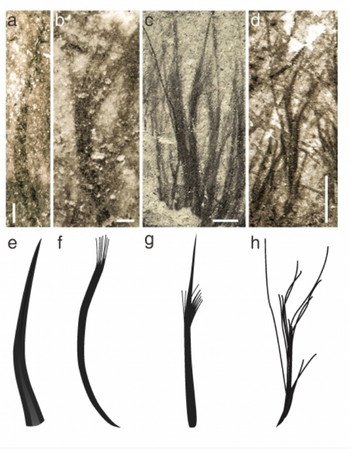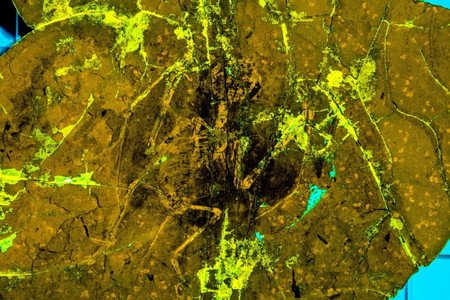18 Dec 2018
HKU fossil imaging helps push back feather origins by 70 million years

The pterosaur studied has four different feather types over its head, neck, body, and wings, which would have generally had a ginger-brown colour. (Reconstruction by Yuan Zhang)
In a new study published in the journal Nature Ecology & Evolution, an international team led by Professor Baoyu Jiang of Nanjing University and including Dr Michael Pittman of the Department of Earth Sciences, shows that pterosaurs had at least four types of feathers in common with their close relatives the dinosaurs, pushing back the origin of feathers by some 70 million years.
Pterosaurs and dinosaurs are closely related reptiles that lived from about 230 to 66 million years ago. Reptiles are generally known for their scales, but pterosaurs evolved a furry covering — often called ‘pycnofibres’ — that was presumed to be fundamentally different from the feathers of birds and other dinosaurs, until now. The new study shows that pterosaurs had at least four types of feathers: (1) simple filaments (‘hairs’), (2) bundles of filaments, (3) filaments with a tuft halfway down and (4) down feathers. These four feather types are known from two major dinosaur groups — the plant-eating ornithischians and the theropods, which include living birds.
Dr Pittman who leads the HKU’s Vertebrate Palaeontology Laboratory said: “These exceptional pterosaur specimens were imaged by myself and Tom Kaye of the Foundation for Scientific Advancement using Laser-Stimulated Fluorescence, a technique we co-developed. The LSF images vividly revealed the form of the wing membrane, demonstrating that its generally ginger-coloured feathers were preserved in place.”
Professor Mike Benton from the University of Bristol’s School of Earth Sciences added: “We ran some evolutionary analyses and they showed clearly that the pterosaur pycnofibres are feathers, just like those seen in modern birds and across various dinosaur groups.”
Despite careful searching, the team was unable to find any anatomical evidence that the four pycnofibre types identified were in any way different from the feathers of dinosaurs, including those of birds. Thus, they came to the conclusion that they must share an evolutionary origin with dinosaurs around 250 million years ago.
The paper:
‘Pterosaur integumentary structures with complex feather-like branching’ by Z. Yang, B. Jiang, M. McNamara, S. Kearns, M. Pittman, T. Kaye, P. Orr, X. Xu and M. Benton in Nature Ecology and Evolution
Link of journal article: https://go.nature.com/2UOwqzj.

Pterosaurs had at least four feather types: filaments, filament bunches, tufted filaments and down feathers. Scale bars in photos a-d are: 100μm, 200μm, 500μm and 1mm. (Image by Zixiao Yang)

Laser-Stimulated Fluorescence (LSF) image of the pterosaur specimen NJU-57003 shows extensive soft tissue preservation in black, demonstrating that the feathers were preserved in place. (Image by Michael Pittman and Thomas G Kaye)







